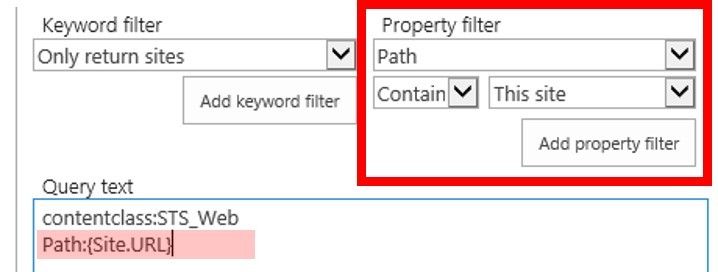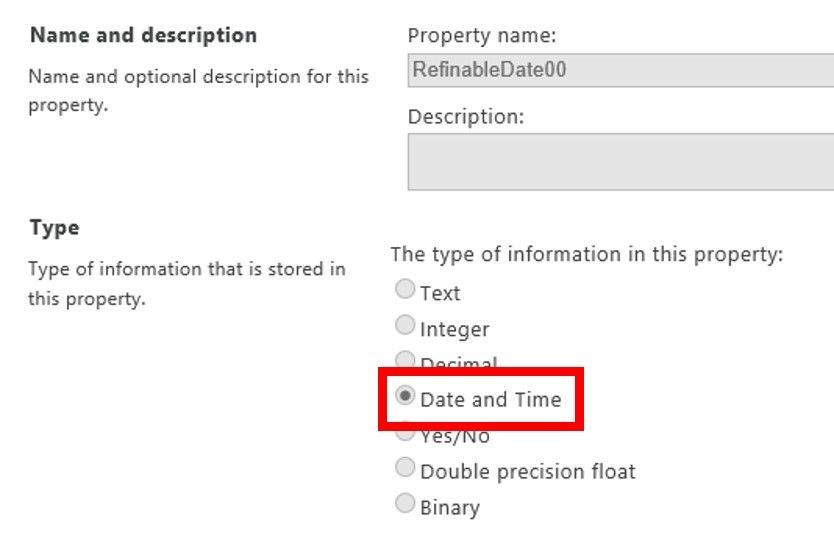One of the biggest issues in SharePoint, is access. Making sure the right people have the right access to the right things, and more importantly the wrong people don't have access. But SharePoint doesn't give you a good overview of this information. This is why this script is so nice. Its shows, who has access, and where, and with what level.
Original Article from Microsoft SharePoint TechNet:
http://social.technet.microsoft.com/wiki/contents/articles/14242.sharepoint-2010-export-all-unique-permissions-from-site-collection-using-powershell.aspx
How to get it to work:
- Save the script as a PowerShell script, example: CreatePermissionMatrix.ps1
- Goto the SharePoint Server.
- Create a folder, example: C:\PermissionLog
- Copy the script in here.
- Open "SharePoint Management Shell", as Administrator.
- Run the PowerShell script, example: . C:\PermissionLog\CreatePermissionMatrix.ps1
- The script will then ask for the SharePoint site URL, you want to report on.
- The script will then ask for the location, where the csv file will be generated, example: C:\PermissionLog
- Script Done :)
- Then you can go a retrieve the csv file.
- It will show: Who has access, and where, and with what level
PowerShell Script:
if ((Get-PSSnapin "Microsoft.SharePoint.PowerShell" -ErrorAction SilentlyContinue) -eq $null) {
Add-PSSnapin "Microsoft.SharePoint.PowerShell"
}
$properties=@{SiteUrl='';SiteTitle='';ListTitle='';ObjectType='';ObjectUrl='';ParentGroup='';GroupOwner='';MemberType='';MemberName='';MemberLoginName='';JobTitle='';Department='';RoleDefinitionBindings='';};
$Permissions=@();
$UserInfoList="";
$RootWeb="";
$SiteCollectionUrl = Read-Host "Enter a Site Collection Url";
$ExportFileDirectory = Read-Host "Enter the Directory Path to create permissions export file";
if(Test-Path $ExportFileDirectory){
$spAssgn = Start-SPAssignment;
Get-SPSite $SiteCollectionUrl -AssignmentCollection $spAssgn|Get-SPWeb -limit ALL -AssignmentCollection $spAssgn|%{
$web = $_;
#Root Web of the Site Collection
if($web.IsRootWeb -eq $True){
$RootSiteTitle = $web.Title;
$RootWeb = $web;
$UserInfoList = $RootWeb.GetList([string]::concat($web.Url,"/_catalogs/users"));
}
$siteUrl = $web.Url;
$siteRelativeUrl = $web.ServerRelativeUrl;
Write-Host $siteUrl -Foregroundcolor "Red";
$siteTitle = $web.Title;
#Get Site Level Permissions if it's unique
if($web.HasUniqueRoleAssignments -eq $True){
$web.RoleAssignments|%{
$RoleDefinitionBindings=@();
$_.RoleDefinitionBindings|%{
$RoleDefinitionBindings += $_.Name;
}
$MemberName = $_.Member.Name;
$MemberLoginName = $_.Member.LoginName;
$MemberType = $_.Member.GetType().Name;
$GroupOwner = $_.Member.Owner.Name;
if($MemberType -eq "SPGroup"){
$JobTitle="NA";
$Department="NA";
$permission = New-Object -TypeName PSObject -Property $properties;
$permission.SiteUrl =$siteUrl;
$permission.SiteTitle = $siteTitle;
$permission.ListTitle = "NA";
$permission.ObjectType = "Site";
$permission.ObjectUrl = $siteRelativeUrl;
$permission.MemberType = $MemberType;
$permission.ParentGroup = $MemberName;
$permission.GroupOwner = $GroupOwner;
$permission.MemberName = $MemberName;
$permission.MemberLoginName = $MemberLoginName;
$permission.JobTitle = $JobTitle;
$permission.Department = $Department;
$permission.RoleDefinitionBindings = $RoleDefinitionBindings -join ",";
$Permissions +=$permission;
#Expand Groups
$web.Groups[$MemberName].Users|%{
$JobTitle="NA";
$Department="NA";
try{
$userinfo = $UserInfoList.GetItemById($_.ID);
$JobTitle=$userinfo["JobTitle"];
$Department=$userinfo["Department"];
}
catch{
}
$permission = New-Object -TypeName PSObject -Property $properties;
$permission.SiteUrl =$siteUrl;
$permission.SiteTitle = $siteTitle;
$permission.ListTitle = "NA";
$permission.ObjectType = "Site";
$permission.ObjectUrl = $siteRelativeUrl;
$permission.MemberType = "SPGroupMember";
$permission.ParentGroup = $MemberName;
$permission.GroupOwner = $GroupOwner;
$permission.MemberName = $_.DisplayName;
$permission.MemberLoginName = $_.UserLogin;
$permission.JobTitle = $JobTitle;
$permission.Department = $Department;
$permission.RoleDefinitionBindings = $RoleDefinitionBindings -join ",";
$Permissions +=$permission;
}
}
elseif($MemberType -eq "SPUser"){
$JobTitle="NA";
$Department="NA";
try{
$userinfo = $UserInfoList.GetItemById($_.ID);
$JobTitle=$userinfo["JobTitle"];
$Department=$userinfo["Department"];
}
catch{
}
$permission = New-Object -TypeName PSObject -Property $properties;
$permission.SiteUrl =$siteUrl;
$permission.SiteTitle = $siteTitle;
$permission.ListTitle = "NA";
$permission.ObjectType = "Site";
$permission.MemberType = $MemberType;
$permission.ObjectUrl = $siteRelativeUrl;
$permission.ParentGroup = "NA";
$permission.GroupOwner = "NA";
$permission.MemberName = $MemberName;
$permission.MemberLoginName = $MemberLoginName;
$permission.JobTitle = $JobTitle;
$permission.Department = $Department;
$permission.RoleDefinitionBindings = $RoleDefinitionBindings -join ",";
$Permissions +=$permission;
}
}
}
#Get all Uniquely secured objects
$uniqueObjects = $web.GetWebsAndListsWithUniquePermissions();
#Get uniquely secured Lists pertaining to the current site
$uniqueObjects|?{$_.WebId -eq $web.Id -and $_.Type -eq "List"}|%{
$listUrl = ($_.Url);
$list = $web.GetList($listUrl);
#Exclude internal system lists and check if it has unique permissions
if($list.Hidden -ne $True){
Write-Host $list.Title -Foregroundcolor "Yellow";
$listTitle = $list.Title;
#Check List Permissions
if($list.HasUniqueRoleAssignments -eq $True){
$list.RoleAssignments|%{
$RoleDefinitionBindings="";
$_.RoleDefinitionBindings|%{
$RoleDefinitionBindings += $_.Name;
}
$MemberName = $_.Member.Name;
$MemberLoginName = $_.Member.LoginName;
$MemberType = $_.Member.GetType().Name;
$JobTitle="NA";
$Department="NA";
if($MemberType -eq "SPUser"){
try{
$userinfo = $UserInfoList.GetItemById($_.ID);
$JobTitle=$userinfo["JobTitle"];
$Department=$userinfo["Department"];
}
catch{
}
}
$permission = New-Object -TypeName PSObject -Property $properties;
$permission.SiteUrl =$siteUrl;
$permission.SiteTitle = $siteTitle;
$permission.ListTitle = $listTitle;
$permission.ObjectType = $list.BaseType.ToString();
$permission.ObjectUrl = $listUrl;
$permission.ParentGroup = "NA";
$permission.GroupOwner = "NA";
$permission.MemberType=$MemberType;
$permission.MemberName = $MemberName;
$permission.MemberLoginName = $MemberLoginName;
$permission.JobTitle = $JobTitle;
$permission.Department = $Department;
$permission.RoleDefinitionBindings = $RoleDefinitionBindings -join ",";
$Permissions +=$permission;
}
}
if($list.BaseType -eq "DocumentLibrary"){
#Check All Folders
$list.Folders|%{
$folderUrl = $_.Url;
if($_.HasUniqueRoleAssignments -eq $True){
$_.RoleAssignments|%{
$RoleDefinitionBindings="";
#Get Permission Level against the Permission
$_.RoleDefinitionBindings|%{
$RoleDefinitionBindings += $_.Name;
}
$MemberName = $_.Member.Name;
$MemberLoginName = $_.Member.LoginName;
$MemberType = $_.Member.GetType().Name;
$JobTitle="NA";
$Department="NA";
if($MemberType -eq "SPUser"){
try{
$userinfo = $UserInfoList.GetItemById($_.ID);
$JobTitle=$userinfo["JobTitle"];
$Department=$userinfo["Department"];
}
catch{
}
}
$permission = New-Object -TypeName PSObject -Property $properties;
$permission.SiteUrl =$siteUrl;
$permission.SiteTitle = $siteTitle;
$permission.ListTitle = $listTitle;
$permission.ObjectType = $list.BaseType.ToString();
$permission.ObjectUrl = $folderUrl;
$permission.MemberType = $MemberType;
$permission.ParentGroup = "NA";
$permission.GroupOwner = "NA";
$permission.MemberName = $MemberName;
$permission.MemberLoginName = $MemberLoginName;
$permission.JobTitle = $JobTitle;
$permission.Department = $Department;
$permission.RoleDefinitionBindings = $RoleDefinitionBindings -join ",";
$Permissions +=$permission;
}
}
}
#Check All Items
$list.Items|%{
$fileUrl = $_.File.Url;
$file=$_.File;
if($_.HasUniqueRoleAssignments -eq $True){
$_.RoleAssignments|%{
$RoleDefinitionBindings="";
$_.RoleDefinitionBindings|%{
$RoleDefinitionBindings += $_.Name;
}
$MemberName = $_.Member.Name;
$MemberLoginName = $_.Member.LoginName;
$MemberType = $_.Member.GetType().Name;
$JobTitle="NA";
$Department="NA";
if($MemberType -eq "SPUser"){
try{
$userinfo = $UserInfoList.GetItemById($_.ID);
$JobTitle=$userinfo["JobTitle"];
$Department=$userinfo["Department"];
}
catch{
}
}
$permission = New-Object -TypeName PSObject -Property $properties;
$permission.SiteUrl =$siteUrl;
$permission.SiteTitle = $siteTitle;
$permission.ListTitle = $listTitle;
$permission.ObjectType = $file.GetType().Name;
$permission.ObjectUrl = $fileUrl;
$permission.MemberType=$MemberType;
$permission.MemberName = $MemberName;
$permission.MemberLoginName = $MemberLoginName;
$permission.JobTitle = $JobTitle;
$permission.Department = $Department;
$permission.RoleDefinitionBindings = $RoleDefinitionBindings -join ",";
$Permissions +=$permission;
}
}
}
}
}
}
if($_.IsRootWeb -ne $True){
$_.Dispose();
}
}
#Dispose root web
$RootWeb.Dispose();
Stop-SPAssignment $spAssgn;
$exportFilePath = Join-Path -Path $ExportFileDirectory -ChildPath $([string]::Concat($RootSiteTitle,"-Permissions.csv"));
$Permissions|Select SiteUrl,SiteTitle,ObjectType,ObjectUrl,ListTitle,MemberName,MemberLoginName,MemberType,JobTitle,Department,ParentGroup,GroupOwner,RoleDefinitionBindings|Export-CSV -Path $exportFilePath -NoTypeInformation;
}
else{
Write-Host "Invalid directory path:" $ExportFileDirectory -ForegroundColor "Red";
}













